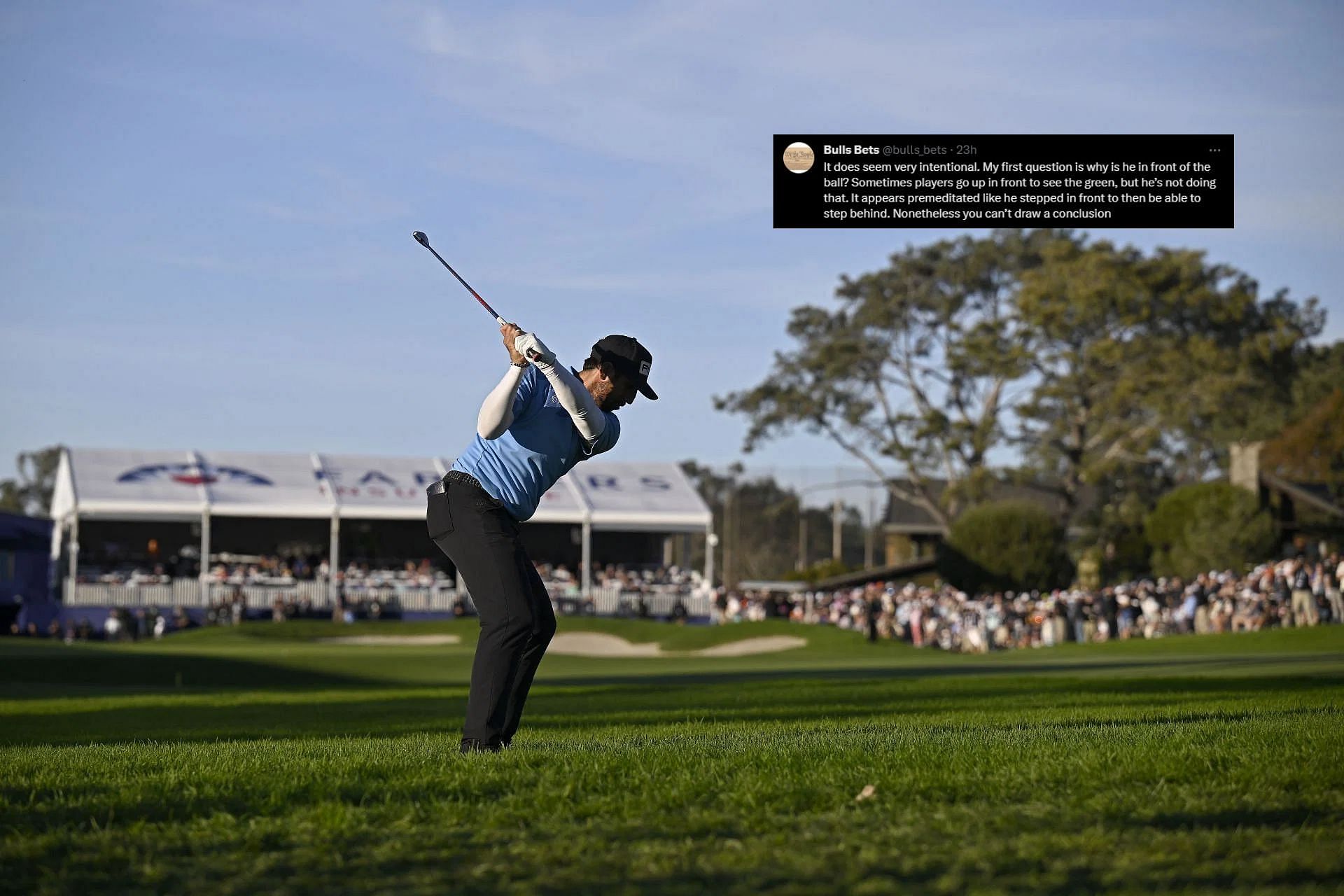
“It does seem very intentional” - PGA Tour fans raise questions over Matthieu Pavon's actions on 18th Hole after video surfaces
Matthieu Pavon's victory at the 2024 Farmers Insurance Open has not stopped being the talk of the golf world. After 48 hours, even the integrity of the Frenchman's most talked-about play of the tournament is being questioned.
A fan identified as ShutFaceGolf (@ShutFaceGolf) posted on his X (formerly Twitter) account a video showing the moments when Matthieu Pavon was setting up his now-famous third shot on the 18th hole of the fourth round.
The fan accompanied the post with the following text:
"No one noticed Pavon clearly step behind his ball to smash the long grass down to allow his iron to get clean contact. That's why the ball had spin. Playing competitors were 100 yards back. There's no reason to step sideways behind your ball otherwise."
ShutFaceGolf's post has gone viral, with 1.5 million views. Numerous fans have reacted to the post in the most varied ways.
Let's take a look at some of the reactions on X:
"It does seem very intentional. My first question is why is he in front of the ball? Sometimes players go up in front to see the green, but he’s not doing that. It appears premeditated like he stepped in front to then be able to step behind. Nonetheless you can’t draw a conclusion."
What do the rules say about Matthieu Pavon's situation?
The general rule of golf states that the ball must be played as it lies and that it must not move. However, both the R&A and the United States Golf Association (USGA) establish several scenarios in which different actions can be taken.
The USGA rules (applicable at the Farmers Insurance Open) provide several scenarios in which the ball may move without incurring a penalty to the player. It also provides for other situations in which the player receives a penalty stroke.
But an essential point of the rule for the specific case of Matthieu Pavon is the following (via USGA):
"Rule 9.2a: A player’s ball at rest is treated as having moved only if it is known or virtually certain that it did. If the ball might have moved, but this is not known or virtually certain, it is treated as not having moved and must be played as it lies."
In other words, if the existing evidence indicates a "possible" movement but not the certainty that this has happened, there is no violation of the rule. The stroke is valid in that case, and so is its result.